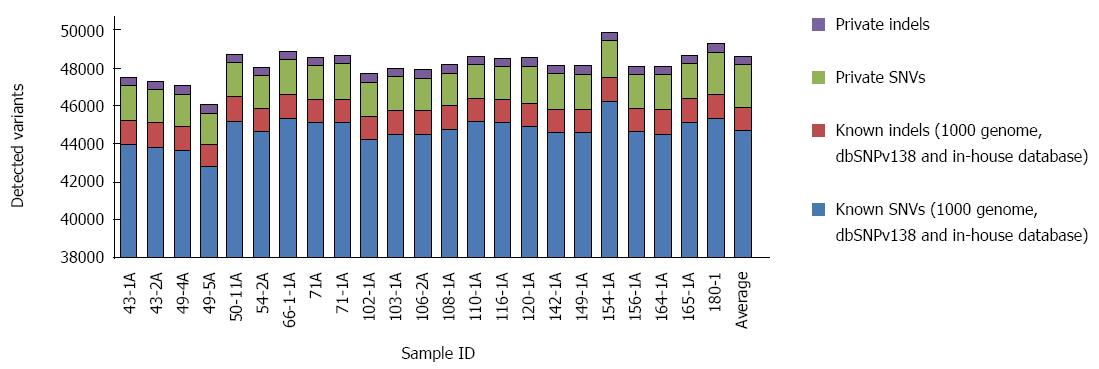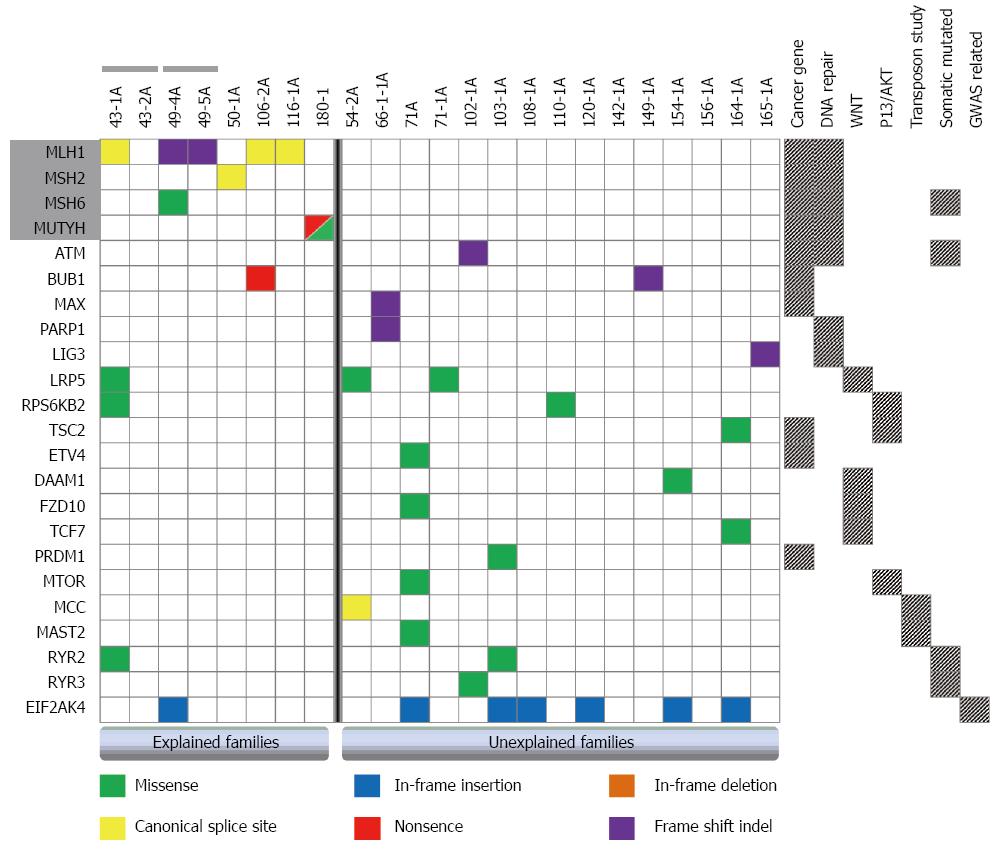Copyright
©The Author(s) 2015.
World J Gastroenterol. Apr 14, 2015; 21(14): 4136-4149
Published online Apr 14, 2015. doi: 10.3748/wjg.v21.i14.4136
Published online Apr 14, 2015. doi: 10.3748/wjg.v21.i14.4136
Figure 1 Variant statistics (marked in colors) for 23 early-onset colorectal cancer patient samples.
The numbers of detected variants are listed on the left hand side and the patient samples ID on the bottom. The different colors represent different types of variants, i.e., purple represents “private indels”, green represents “private SNVs”, red and blue represent known indels and known SNVs listed in the 1000 genome, dbSNPv138 and in-house databases, respectively. SNV: Single nucleotide variant.
Figure 2 Germline variants identified in known colorectal cancer predisposing genes and genes likely to play a role in colorectal cancer development.
The genes are listed on the left hand side and the patient samples on top. Patient samples from the same families are marked (bars). Known colorectal cancer (CRC) predisposing genes are marked by shading (left). The shades at the right hand side of the figure indicate functional (groups of) genes considered to play a role in CRC development. The different variant types are indicated in colors (right). The red-triangle/green-triangle square in sample 180-1 indicates the presence of one MUTYH nonsense and one MUTYH missense mutation.
Figure 3 Pedigree and segregation analysis in family members of index patients for MLH1 and MSH6 mutations.
Index patients are indicated by arrows. Both index patients II:5 (sample 49-4A) and II:6 (sample 49-5A) carried MLH1 frame shift mutation (c.1163_1164insT, p.Arg389Profs*6) and II:5 also carried MSH6 missense mutation (c.2300C>G, p.Thr767Ser). Two brothers II:1 (colon cancer at age of 43) and II:3 (no cancer) carried both mutations. A sister (II:2, no cancer) carried neither the MLH1 nor the MSH6 mutation. A third brother (II:4) carried the MSH6 mutation, but not the MLH1 mutation. And the mother of index patients carried MLH1 mutation, but not the MSH6 mutation. Both did not develop cancer.
- Citation: Zhang JX, Fu L, de Voer RM, Hahn MM, Jin P, Lv CX, Verwiel ET, Ligtenberg MJ, Hoogerbrugge N, Kuiper RP, Sheng JQ, Geurts van Kessel A. Candidate colorectal cancer predisposing gene variants in Chinese early-onset and familial cases. World J Gastroenterol 2015; 21(14): 4136-4149
- URL: https://www.wjgnet.com/1007-9327/full/v21/i14/4136.htm
- DOI: https://dx.doi.org/10.3748/wjg.v21.i14.4136











